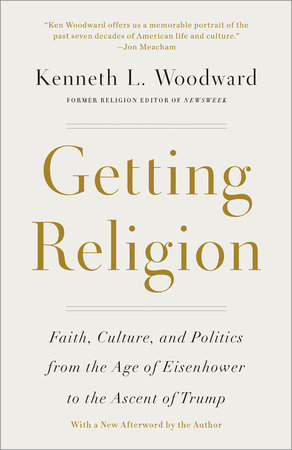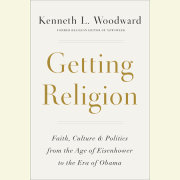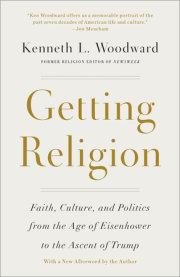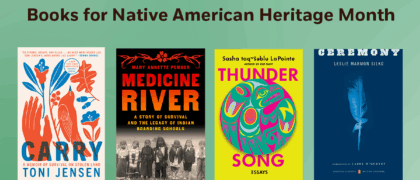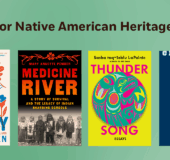Chapter 1
Embedded Religion
It Goes with the Territory
On the wall of my old Newsweek office, next to a window with a narrow view of the changing seasons in lower Central Park, I kept a large map, in a mosaic of colors, of the United States. When you are a writer working in New York City, you need something to remind you of what the rest of the country is like: this was mine. There are no place-names on the map, only the boundaries of the states, and within them the spidery outlines of each county. It’s a relief map of sorts: any county in which 25 percent or more of the citizens identify with a single religious denomination is shaded in a color representing that tradition. Counties where more than half the people are of one persuasion--more than half the map--are colored more deeply.1
At a glance, the map yields a rough religious geography of America. Across the South, where it sometimes seems there are more Baptists than there are people, the counties are awash in deep red. Utah, Idaho, and Wyoming are solidly gray: the Mormon Zion. There are swaths of Lutheran green in Minnesota and Wisconsin. Belt high from Delaware to central Kansas, especially in rural areas, the map shows streaks and potholes of blue where the Methodists and their nineteenth-century circuit riders planted churches. Catholic purple blankets the Northeast, the Great Lakes region, the Gulf Coast, and nearly all of California. Like my window onto Central Park, the map afforded a view of America that’s closed to most New Yorkers, especially those who regard their city as the center of the universe. When colleagues stopped by my office they’d often stare over my head at the map. “Where are my people?” was the usual question. Some Episcopalians, thinking of all their coreligionists elected to Congress and the White House, assumed the nation’s capital to be theirs. But the District of Columbia is heavily African American and so it is dyed a deep Baptist red. According to the map, Episcopalians do dominate a half-dozen counties--all of them tribal reservations in North Dakota where the church made converts of the Native American inhabitants. Most Jewish colleagues thought New York City and its environs (home to half the nation’s Jews) was surely theirs to claim, but the whole metropolitan area is deep Catholic purple. Jews do own a plurality in one Florida county, Miami-Dade.
Recent demographic studies back up the map’s quick visual impressions. Between them, Catholics and Baptists alone account for 40 percent of the American population. Each has its homelands--states where Catholics or Baptists own absolute majorities--and its diasporas, where to be a Catholic or a Baptist is to hold outsider status. In other words, religion cannot be separated from region. And neither can it be separated from ethnicity. Social historians looking at my map would immediately recognize the counties where Dutch Calvinists, German pietists, Scotch-Irish Presbyterians, and Scandinavian Lutherans carved out their ecological niches. In America, even now, religion “goes with the territory.”
For me, the map was a visual reminder that religion in America has never been just a matter of personal choice. It has also been about community and connection--to places, to people, and to what religiously convicted Americans have made of the places where they chose to live. Which is to say that religion, as a way of belonging as well as of believing and behaving, is always embedded--in institutions, yes, but also in the landscape. “Habitations,” as historian Martin Marty reminds us, “foster habits.”
I am a midwesterner--born there, reared there, educated at three midwestern universities, and before I moved to New York and to Newsweek magazine I had lived in six of the eleven “heartland” states. In mix of religion, as in mix of population, the Middle West is more representative of the nation as a whole than is any other region of the United States. More important, perhaps, the Middle West is what movie mythmakers have imagined the entire nation to be like when Americans are on their best behavior. From Meet Me in St. Louis and State Fair through The Wizard of Oz, The Music Man, Field of Dreams, and Hoosiers, the Middle West has supplied its share of fictive images of hometown innocence, morality, and even magic realism: “Toto, I’ve a feeling we’re not in Kansas anymore,” Dorothy says to her dog when they land in Oz. But, of course, they are.
I grew up in Ohio, where, a glance at my office map reminded me, almost every kind of Protestant denomination could claim a town or county as its turf. Even after their children moved on, these immigrants from elsewhere left behind brick-and-mortar evidence of their hegemony in the form of church-related colleges--more of them, when I was college-age, than any other state. The Methodists established Ohio Wesleyan and Otterbein; the Episcopalians, Kenyon College; the Congregationalists, Oberlin and Marietta; the Presbyterians, Wooster; the Quakers, Wilmington College; the German Reform Church, Heidelberg; English Evangelical Lutherans, Wittenberg; the Mennonites, Bluffton, and so on. Students at these small liberal arts colleges not only learned together; they also worshipped together at chapel, and the faculty was hired to ensure that the distinctive character of the founding church tradition was passed on whole and intact. After commencement, graduates married each other, too.
Catholics, of course, had their own colleges on their own urban turf in cities like Cleveland, Cincinnati, and Dayton. There, as in the Protestant colleges, the goal was to provide an education that included solid formation in the faith. For that reason, if a graduate of a Catholic high school wanted to stay near home and attend a nearby Protestant college--or venture east to Harvard or Yale--he usually had to forward his transcripts himself because Catholic school officials discouraged journeys beyond the pale.
My father was born in the final November of the nineteenth century on what was to become Veterans Day. He was reared among hymn-singing, family-reunion-gathering, Sunday-dinner-making, small-town Ohio Protestants of Welsh and Scotch-Irish stock. An only child, he was never one to talk about his youth. But he did reveal one important detail of his early life: in Youngstown, where he lived, he stepped forward at a revival by evangelist Billy Sunday and at age sixteen declared himself for Christ. It was during the Wobblies’ (Industrial Workers of the World) strike against the Youngstown steelworks in 1916, and the conjunction of these two emotional events, I’ve always thought, is why he was anti-labor all his life. In any case, my job as a religion writer never impressed him more than when, on a Sunday afternoon while my parents were visiting, another evangelist, Billy Graham, called me--at home--just to have a chat.
My mother was from an Irish-Italian family in Detroit. She was the first in the extended Brady-Cauzillo family to go to college--a leap from a one-room schoolhouse to the University of Michigan’s vast Ann Arbor campus--and that was the pivotal experience of her youth. When we were kids she used to reprise her sorority song for us: it was a sorority just for Catholic coeds. Here’s the kind of Catholics my mother’s siblings were. Her brother, my only uncle, kept copies of the Imitation of Christ by Thomas a Kempis on his desk and passed them out to vendors who called on him for business. It didn’t matter whether they were Catholic or even Christian. One sister was a cloistered nun who snuck away from college one day, without my grandmother’s permission, and crossed the border to join her friends in a Canadian convent. Two others, both English teachers in mostly black inner-city public high schools and never married, shared a tidy house with a crucifix hung in every room. On a bookshelf they kept a series of volumes by Catholic intellectuals published by Sheed and Ward. Whenever they drove their car, they paused first to dip their fingers in holy water founts mounted on each side of the garage doorframe. On the road they routinely recited the rosary. Even on short trips to the grocery, they measured distances by how many decades they could finish before they reached their destination.
How my parents met and married across religious boundaries was never explained to us. We did know, though, that the ceremony was held in the parish rectory because religiously mixed couples were not allowed a wedding inside a Catholic church. At that time, my father pledged to rear the children Catholic, as the church required, and though he never became a Catholic himself, he never wavered in his pledge.
I have ventured this brief family biography for just one purpose. Growing up where and when I did, I experienced an America that was highly diverse, though not in the ways we think of diversity today. What region of the country you inhabited mattered greatly, and so did ethnic background. But the primary source of diversity in those days was religion. Since this is no longer true, this facet of American social history needs explanation.
The immigrant communities then were mostly white and European. In cities like Cleveland, the place I knew best, each had its own neighborhoods and social clubs, funeral parlors, corner bars and restaurants, as well as churches. At home, adults cooked and talked Greek and Italian, Polish and Slovak, just as more recent immigrants now speak Spanish, Mandarin Chinese, or Arabic. They read and discussed newspapers in Ukrainian, Czech, Armenian, Romanian, and Yiddish. Yes, they were mostly Christian, but that only made differences in church doctrine and tradition more pronounced: Muslims and Hindus are intriguing in their obvious otherness, but none of the religions new to America today challenge Christians like other Christians claiming to be the one true church of Jesus Christ.
In urban neighborhoods, therefore, no less than in small towns, where you worshipped--and how--said much about who you were. Even the ecumenically inclined and the nonreligious observed their social boundaries and kept their social distance. Within all these “ghettos” (though no one called them that), religion was free to form individual and group identities through shared “habits of the heart” and acquired sensibilities. Even in the more open spaces of the suburbs, where I grew up, the families you knew best belonged to the same church. But my parents’ marriage was proof to me that the boundaries created by religion could amicably be breached. Nonetheless, among those who took it very seriously, religion remained a powerful symbol system that defined ultimate reality for all who lived in its embrace.
But however diverse Americans felt themselves to be, all of us who would come of age in the Fifties were marked by a single event: the Second World War.
Growing Up on the “Home Front”
I was born in 1935 and passed through childhood while the nation was at war. Unlike the war in Vietnam two decades later, World War II united the nation in common cause. Unlike our more recent wars in Afghanistan and Iraq, this war was not fought offstage by volunteers so that the good life at home could continue uninterrupted. To the contrary, on the “home front” all children were suckled on a culture of sacrifice and restraint--one that linked us closer to the children of the Great Depression (though our circumstances were never so drastic) than to our own children born into postwar affluence. Beginning in 1942, staples of the good life--first sugar, then gasoline, fuel oil, and rubber tires, then fruit juices, canned and frozen food, including baby food, even shoes and clothes--were strictly rationed. As participants in the common “war effort” everyone made do.
My mother dutifully planted a low-yield Victory garden--thin carrots, limp bean stalks, lettuce the size of baseballs. By war’s end, 40 percent of the nation’s vegetables were harvested from an estimated 20 million family plots like ours. At the store, Mother bought meat and butter with red ration stamps from her government-issued “War Ration Book” and soups and dried beans from stamps color-coded blue. Because he was a salesman, and his car was his living, my father got extra ration stamps for gas. At home, he did his civil duty as a suburban air-raid warden: one night a month, when the warning siren sounded, he put a yellow metal helmet on his head and went about making sure the neighbors had turned out all their lights, lest enemy bombers should penetrate the airspace over Lake Erie’s southern shore. My older brother and I followed the battles overseas by pasting newspaper headlines in scrapbooks. From inside cereal boxes we collected colorful arm patches worn by the men in uniform, and from strips of balsam wood and glue built models of the airplanes the American pilots flew.
It was a good time to be a child. Despite the separations caused by the war, even young families were remarkably stable. Divorce was rare: most marriages lasted until the death of a spouse. In the families I knew, only the father worked and all the fathers seemed to arrive home in unison by 6 p.m. The mothers not only reared the children and did the housework; they also made the schools and churches hum. Through these community ties they were the marriage partners who decided which neighbors would also be close friends.
Weekends were strung like hammocks between the fathers’ Friday evening arrivals and their going off on Monday mornings. In their absence, life on the block unrolled as regular as church ritual. Once a week the iceman delivered a chiseled block to keep our food refrigerated, and cut cold slivers for us to suck. The uniformed milkman delivered full bottles on his scheduled route and took away clinking empties. And when the bread man arrived curbside we rushed inside to inhale the concentrated aroma of fresh-baked jelly rolls and warm pecan buns. Life on the home front was predictable. The war and its restrictions gave even kids a sense of unity and national purpose. Then the war was over. Only later did we learn about the multitude of young men who never came back.
Roots and Horizons
All of us come from a place we mistake for universal. So you should know something of mine. The place I called home was a suburb that mushroomed a century earlier out of farms and orchards and shoreline summer cottages sixteen miles west of Cleveland. Rocky River, as it came to be called, spread out from a tavern overlooking a river (hence the name) that rolls through a deep gorge on a meandering path to Lake Erie. It was our Grand Canyon. A single arch of concrete, once the longest in the world, shouldered traffic east and west, and on a separate wooden trestle, freight trains on the “Nickel Plate Road” (the New York, Chicago & St. Louis Railroad) hustled manufactured parts to assembly plants in Toledo and Detroit. Rocky River had eleven thousand inhabitants then and called itself a city only because it was governed by its own mayor and city council. By my definition, though, a city was a place with a choice of movie theaters and Rocky River had only one: the Beach Cliff.
1. For an updated map of the kind I used and much more useful historical information on religion and geography see Edwin Scott Gaustad and Phillip L. Barlow, with the special assistance of Richard W. Dishno, New Historical Atlas of Religion in America (New York: Oxford University Press, 2001).
Copyright © 2016 by Kenneth L. Woodward. All rights reserved. No part of this excerpt may be reproduced or reprinted without permission in writing from the publisher.

